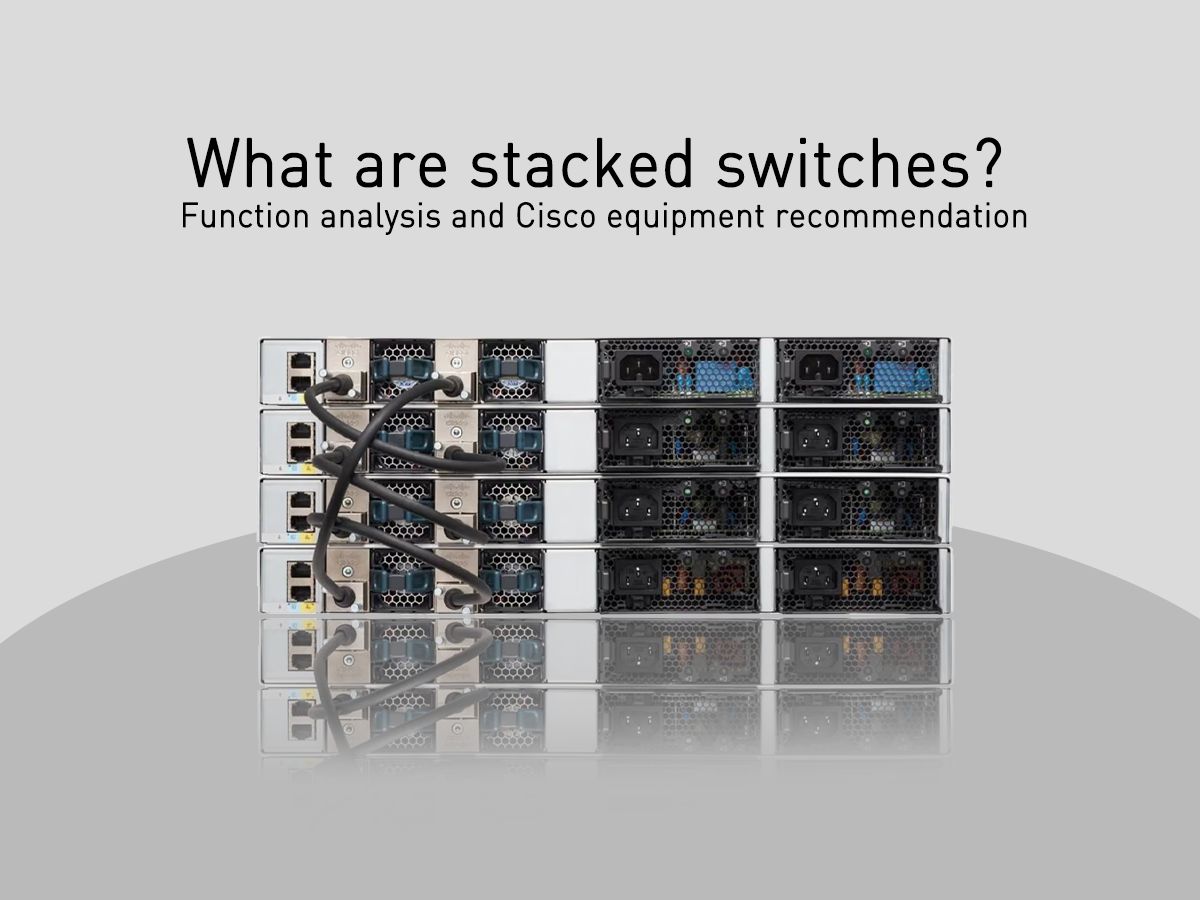














With the rapid development of the information age, the demand for network equipment in enterprises is continuously increasing, especially for those companies looking to expand their networks. How can multiple network devices be managed efficiently? How can system availability be ensured? This is where stackable switches come in to help businesses address these issues. But what exactly are stackable switches? What are their advantages and disadvantages?

Switch stacking is achieved by connecting a group of Cisco EtherSwitch service modules or Catalyst 3750 switches through Cisco StackWise ports, causing them to operate as if they were a single device. In a stacked system, one Cisco EtherSwitch service module or Catalyst 3750 switch takes control of the entire stack's operations, known as the stack master switch. When a switch is designated as the stack master, the master LED on its front panel will light up green.
The other Cisco EtherSwitch service modules or Catalyst 3750 switches act as stack members, working in conjunction with the master switch. With Cisco StackWise technology, these stack members form a unified system. Additionally, Layer 2 and Layer 3 protocols treat the entire stack as a single network entity.
In simple terms, stackable switches allow multiple independent switches to be connected through stacking cables, thus managing multiple devices as if they were a single entity. Compared to traditional switch configurations, stackable switches offer users greater flexibility and scalability.
In a stack system, each switch can act as either a "master switch" or a "standby switch." If the master switch fails, the standby switch will automatically take over to ensure continuous network operation. This automated redundancy mechanism helps prevent business losses due to sudden network interruptions.
Moreover, stackable switches facilitate business expansion for companies. If the network needs to be upgraded due to company growth, simply adding new switches to the stack system is enough. This approach provides significant room for future expansion.
Furthermore, stackable switches enable administrators to manage multiple switches through a management platform, reducing network complexity and the likelihood of human error.
While switch stacking can enhance network management efficiency and scalability, it also comes with some notable drawbacks. First, if the master switch in the stack fails, it may cause instability or even downtime for the entire stack, affecting all connected devices.
Additionally, the management complexity of a stack is higher than that of a single switch. Firmware upgrades, configuration changes, and troubleshooting can be more challenging. In terms of cost, stackable switches and their dedicated stacking cables and modules are typically more expensive than non-stackable devices. Especially when the inter-stack communication volume exceeds the backplane bandwidth, bandwidth bottlenecks may occur, limiting network performance.
Furthermore, stack environments have dependencies on specific models, power consumption and heat issues, scalability limitations, and firmware compatibility concerns that businesses need to weigh. Lastly, network administrators may face a steep learning curve, especially for teams accustomed to managing independent switches.
The Cisco Catalyst 9300 series is suitable for enterprise-level network deployment, supporting up to 480Gbps stacking bandwidth and featuring high-security dynamic access control.
The Cisco Catalyst 3850 series is an ideal choice for businesses requiring high-performance networks. It supports stacking and modular design, and has wireless control capabilities, allowing for unified management of wired and wireless networks.
The Cisco Catalyst 2960-X series is a cost-effective and powerful stackable switch, popular among small and medium-sized enterprises. It supports stacking of up to eight devices, making it an ideal choice for network expansion.
When setting up a network in a business, switch stacking configurations are often used. Here is an example configuration using the Cisco 9200L:
Clear the configuration: erase startup-config
Delete VLAN: delete vlan.dat write memory reload
View switch member numbers (Privileged Mode): Switch#show switch
Renumber member switches; it's best to number them sequentially (Global Configuration Mode): Switch(config)#switch <old-member-number> renumber <new-member-number>
Enable stack ports; this needs to be done for each switch number (Privileged Mode): Switch# switch 2 stack port 1 enable Switch# switch 2 stack port 2 enable
Configure the master member priority: Switch(config)#switch <new-member-number> priority 15
Configure the master member version number (corresponding to the switch model): Switch(config)switch <new-member-number> provision ws-c3650-24ps
View a summary of stack switch member information: Switch#show switch (Privileged Mode)
View stack port status information: Switch#show switch stack-ports (Privileged Mode)
View stack cable transmission rate information: Switch#show switch stack-ring speed (Privileged Mode)
View detailed information about switch members: Switch#show switch detail
Overall, stackable switches not only simplify network management but also provide flexible options for future business development. Whether you are a small to medium-sized business organization or are pursuing efficient core network solutions, the Cisco stackable switch series is capable of providing you with effective network solutions.
If you are considering upgrading your network hardware or wish to explore more details about Cisco stackable switches, feel free to contact our professional team. We are ready to provide you with comprehensive consultation and assistance.




